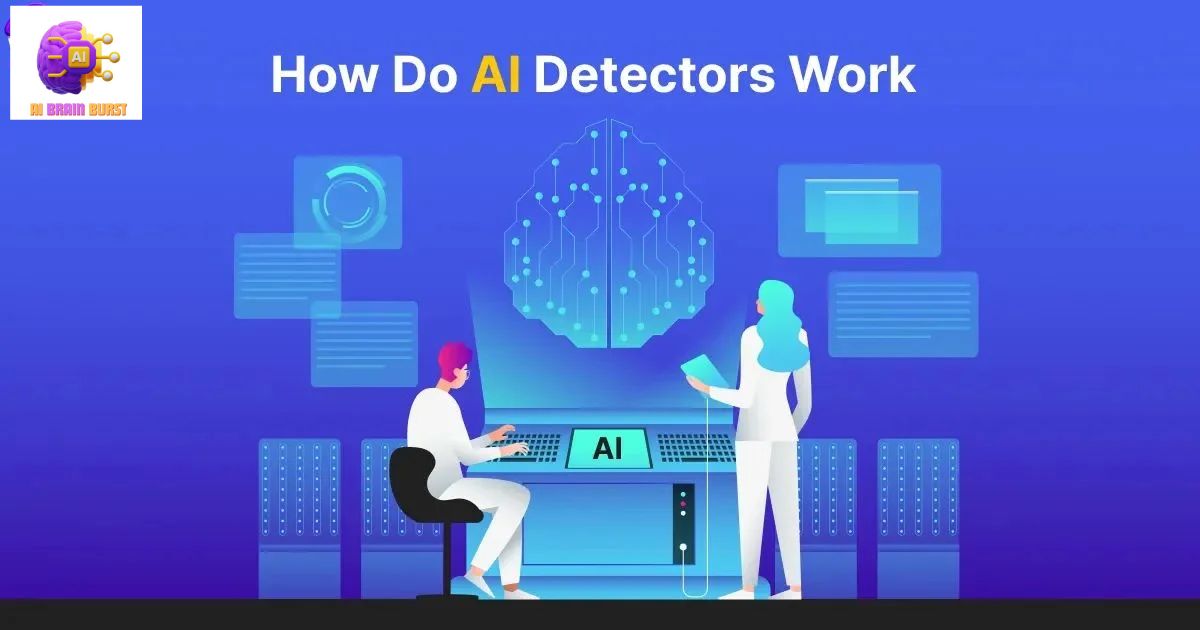AI detectors are systems equipped with artificial intelligence that analyze and identify specific patterns or objects. These detectors use algorithms to recognize and classify information, enabling them to detect anomalies or objects of interest in various data sets. Common applications include image recognition, fraud detection, and security surveillance.
Unlock the mysteries behind AI detectors! Ever wondered how AI detectors work their magic? Dive into the fascinating world where algorithms decipher patterns, enabling these detectors to identify anomalies, secure sensitive information, and revolutionize various industries. Curiosity piqued? Discover the inner workings of AI detectors now!
How do AI detectors work?
AI detectors, including those focused on tasks such as image recognition, fraud detection, and security surveillance, operate by leveraging advanced algorithms. These intelligent systems use machine learning to continuously improve their accuracy, enabling them to analyze data and identify specific patterns or anomalies. One notable advancement in this field is the incorporation of novel AI techniques, which further enhance the capabilities of these detectors.
Perplexity
Perplexity is a measure used in natural language processing to assess the effectiveness of language models. It gauges how well a model predicts a given set of data, reflecting its ability to navigate and understand the complexity of language. The lower the perplexity score, the better the model performs in predicting the next word in a sequence.
- Perplexity Definition: Perplexity quantifies the uncertainty or surprise associated with a language model when predicting the next word in a sequence.
- Evaluation Standard: A lower perplexity score indicates a language model that better captures the intricacies of language and is more effective in predicting the next elements in a given sequence.
Burstiness
Burstiness refers to the tendency of data or events to occur in clusters or bursts rather than being uniformly distributed over time. In various fields, burstiness is a significant concept influencing data analysis and modeling. Understanding burstiness helps in developing more accurate models and predictions, especially when dealing with datasets that exhibit irregular patterns or sudden spikes in activity.
- Burstiness Concept: Burstiness captures the non-uniform distribution of events, highlighting the tendency for occurrences to cluster together in time.
- Impact on Modeling: Recognizing burstiness is crucial for improving models in fields like network traffic, social media activity, or financial markets, where sudden surges or fluctuations in data can significantly affect predictive accuracy.
A potential alternative: Watermarks

Watermarks serve as a potential alternative in various contexts, offering a discreet and effective way to protect and authenticate content. These faint imprints or patterns embedded in digital or physical media act as visible or invisible markers. As a security measure, watermarks can deter unauthorized use or duplication, providing a reliable means of tracking and verifying the authenticity of documents, images, or multimedia. However, in specialized domains like digital art and online content creation, technologies such as the AI Hentai Generator are also emerging, offering novel approaches to content creation and manipulation.
- Authentication and Protection: Watermarks are employed to authenticate and protect digital or physical content, discouraging unauthorized use and ensuring the integrity of the material.
- Versatility: Whether applied to images, documents, or other media, watermarks offer a versatile solution for content creators, providing a subtle yet robust method to safeguard their work against misuse or unauthorized reproduction.
The only proofreading tool specialized in correcting academic writing try for free!

Introducing the sole proofreading tool tailored for academic writing! This specialized tool is designed to meticulously correct and enhance the quality of academic documents. Experience its precision and effectiveness for free, ensuring your scholarly work reaches its highest level of clarity and professionalism.
How reliable are AI detectors?
AI detectors have proven to be increasingly reliable in various applications, thanks to advancements in machine learning and data processing. Their dependability is evident in tasks such as image recognition, fraud detection, and security surveillance, but their effectiveness can vary based on specific factors.
Training Data Quality: The reliability of AI detectors heavily depends on the quality and diversity of the data used during their training.
Algorithm Sophistication: The level of sophistication in the underlying algorithms contributes significantly to the reliability of AI detectors.
Task-Specific Performance: The effectiveness of AI detectors varies based on the complexity and nature of the task they are designed for.
Continuous Learning: Detectors that incorporate continuous learning mechanisms tend to be more reliable as they adapt to evolving patterns and scenarios.
False Positive/Negative Rates: Assessing the rates of false positives and false negatives provides insights into the reliability of AI detectors, ensuring a balance between sensitivity and precision.
AI detectors vs. plagiarism checkers
AI detectors and plagiarism checkers are distinct tools designed to address different aspects of content analysis. While both leverage artificial intelligence, their primary focuses and functionalities set them apart.
AI Detectors:
AI detectors are versatile tools that employ advanced algorithms to recognize and analyze patterns, making them effective in various applications such as image recognition, fraud detection, and security surveillance.
Broad Applicability: AI detectors have a wide range of applications beyond plagiarism detection, contributing to their versatility.
Complex Pattern Recognition: Their capability for complex pattern recognition enables AI detectors to excel in tasks requiring nuanced analysis.
Continuous Learning: Many AI detectors incorporate continuous learning mechanisms, allowing them to adapt to evolving patterns and improve over time.
Task-Specific Design: These detectors are often designed for specific tasks, ensuring optimized performance in their intended domains.
Multi-Purpose Usage: AI detectors serve purposes beyond plagiarism checking, making them valuable in diverse fields like healthcare, finance, and image analysis.
Plagiarism Checkers:
Plagiarism checkers, on the other hand, are specialized tools explicitly designed to identify and flag instances of content duplication or unauthorized use.
Focused Functionality: Plagiarism checkers are specifically engineered to address the issue of content originality, offering a focused solution for academic and professional settings.
Textual Comparison: These tools excel at comparing textual content against vast databases to identify similarities, providing a comprehensive approach to plagiarism detection.
Academic Integrity: Plagiarism checkers play a crucial role in upholding academic integrity by ensuring that submitted work is original and properly credited.
Educational Institutions: They are commonly employed in educational institutions to maintain academic standards and deter plagiarism among students.
Specific Use Case: Plagiarism checkers cater to a specific use case, emphasizing the importance of originality in written content rather than broader pattern recognition.
What are AI detectors used for?
AI detectors find extensive applications across various industries, leveraging advanced algorithms and machine learning capabilities to analyze and interpret data. Their versatility makes them indispensable in addressing specific needs and challenges in different domains.
Common Applications of AI Detectors:
1. Image Recognition: AI detectors excel in identifying and classifying objects within images, facilitating applications in fields like autonomous vehicles, medical imaging, and security surveillance.
2. Fraud Detection: In the financial sector, AI detectors are instrumental in detecting anomalous patterns and identifying potential fraudulent activities by analyzing transaction data.
3. Security Surveillance: AI detectors enhance security systems by analyzing video feeds to identify suspicious behavior or objects, improving the overall effectiveness of surveillance.
4. Natural Language Processing: In the realm of language, these detectors contribute to tasks such as sentiment analysis, language translation, and chatbot interactions, enhancing communication processes.
5. Healthcare Diagnostics: AI detectors play a crucial role in medical diagnostics, analyzing medical imaging data, identifying patterns in patient records, and assisting healthcare professionals in making informed decisions.
Their adaptability and continuous learning capabilities make AI detectors valuable tools in addressing diverse challenges across sectors, contributing to advancements in technology and data analysis.
The only proofreading tool specialized in correcting academic writing try for free!

Experience the ultimate solution for academic writing perfection! Our proofreading tool is exclusively designed to cater to the unique requirements of academic documents. Try it for free and elevate the quality of your scholarly work with precise and tailored corrections.
Detecting AI writing manually
Detecting AI writing manually can be challenging, but there are some key indicators and strategies to help discern human-generated content from that produced by artificial intelligence.
Consistency and Tone:
- Human writing often exhibits emotional nuances, personal voice, and a natural flow, while AI-generated content may lack these human elements.
- Consistency in writing style, tone, and the use of idiomatic expressions can be indicative of human input.
Semantic Understanding:
- Human writers typically display a deeper understanding of context, irony, and subtle nuances in language that AI may struggle to comprehend.
- AI-generated content might demonstrate a more formulaic or generic approach, lacking the depth of understanding seen in human-authored pieces.
Despite these indicators, it’s essential to note that AI writing can mimic human writing closely, and manual detection may become more challenging as AI continues to advance. It often requires a nuanced and comprehensive analysis to distinguish between the two.
AI image and video detectors

AI image and video detectors are advanced technologies that utilize artificial intelligence to analyze and interpret visual content, revolutionizing various industries and applications.
These detectors operate by employing sophisticated algorithms that can recognize patterns, objects, and even behaviors within images and videos. This technology is extensively used in sectors like security surveillance, where it can identify anomalies or potential threats in real-time. In addition to security, AI image and video detectors find applications in healthcare, assisting in medical image analysis and diagnostics. They also contribute to the development of autonomous vehicles by enabling them to perceive and respond to their surroundings.
The continuous advancement of AI in image and video detection is enhancing our ability to process and understand visual information, leading to improved safety, efficiency, and innovation across diverse fields.
Pattern Recognition: AI image and video detectors excel at recognizing complex patterns and objects within visual content, enabling applications such as object identification and tracking.
Real-time Analysis: These detectors operate in real-time, making them valuable in security surveillance, where they can quickly identify and respond to potential threats or unusual activities.
Cross-Industry Applications: AI image and video detectors have diverse applications, ranging from healthcare for medical image analysis to enhancing the capabilities of autonomous vehicles by enabling them to interpret and navigate their surroundings.
Frequently asked questions
How does AI content detector work?
AI content detectors work by employing advanced algorithms to analyze and interpret textual, visual, or audio content, aiming to identify patterns, anomalies, or specific features in order to categorize, filter, or flag content based on predefined criteria.
Are AI detectors actually accurate?
The accuracy of AI detectors varies depending on factors such as the quality of training data, algorithm sophistication, and the specific task they are designed for, but advancements in machine learning have significantly improved their overall accuracy in various applications.
How do AI image detectors work?
AI image detectors work by utilizing advanced algorithms to analyze visual data, recognizing patterns, objects, and features within images through complex computations, enabling applications such as object detection, image classification, and facial recognition.
Can AI detectors be wrong?
Yes, AI detectors can be wrong, as their accuracy depends on factors like the quality of training data, the complexity of algorithms, and the specific conditions under which they operate, leading to the possibility of false positives or false negatives in their predictions.
Conclusion
In conclusion, AI detectors play a pivotal role in today’s technological landscape, offering valuable solutions in diverse fields. Their ability to analyze data, recognize patterns, and make predictions has led to significant advancements in security, healthcare, and various other industries. As these detectors continue to evolve with advancements in machine learning, their impact on enhancing efficiency, accuracy, and innovation is poised to grow, making them indispensable tools in our ever-expanding digital world.
While AI detectors bring numerous benefits, it’s crucial to acknowledge their limitations and potential inaccuracies. The reliability of these detectors depends on factors like data quality, algorithm design, and the dynamic nature of the tasks they perform. Striking a balance between harnessing their capabilities and understanding their limitations is essential to ensure responsible and effective integration into various applications. As technology progresses, ongoing research and development will further refine AI detectors, fostering a future where their contributions continue to shape and improve the way we interact with and interpret information.








